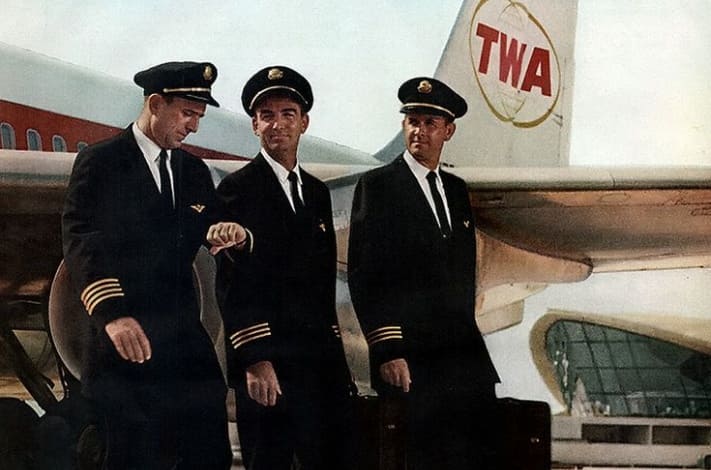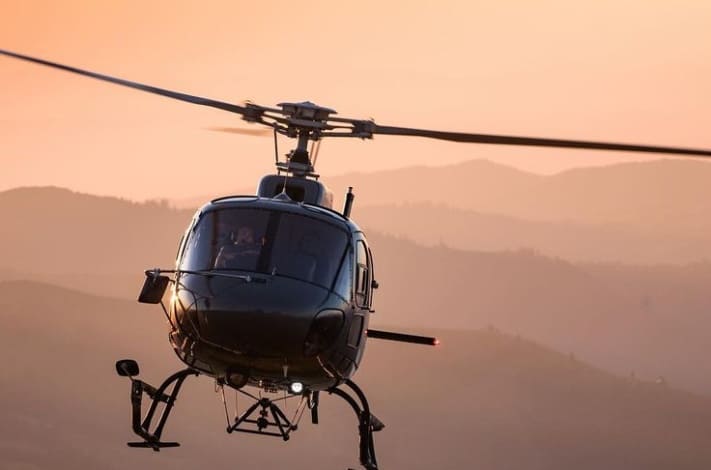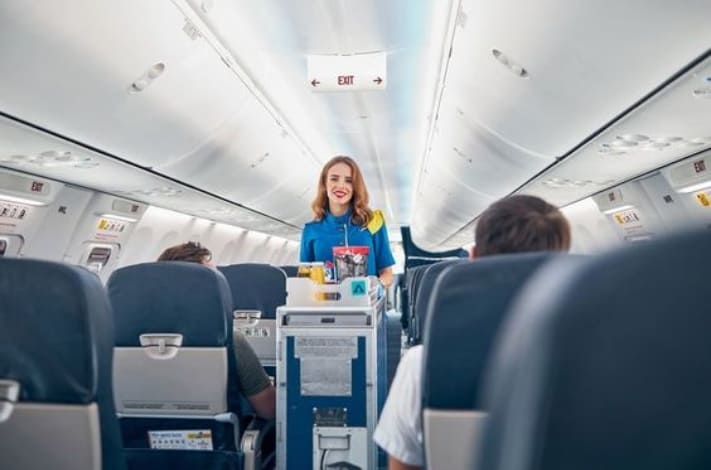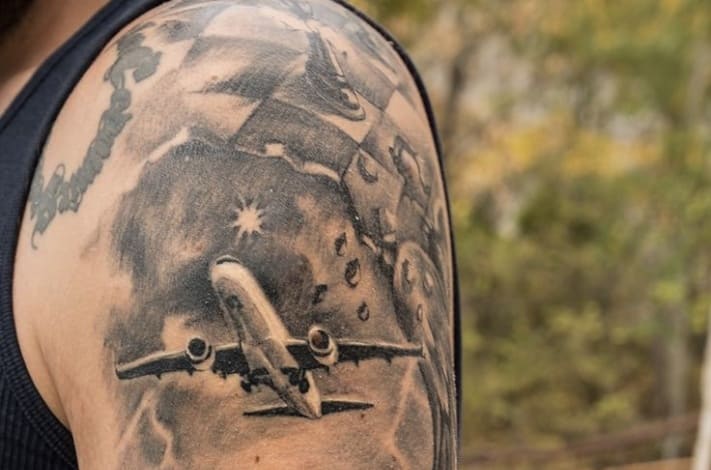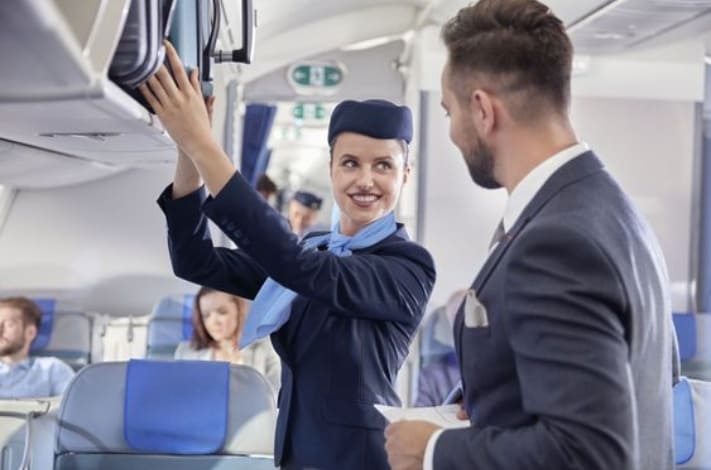You may have noticed that commercial airline pilots sport stripes on the sleeves or shoulders of their uniform, but never thought about their significance. The purpose of airline pilot stripes is to show the rank and experience of the individual pilot at a glance and make it easy for the crew members to know who’s in charge of what. The pilot uniform stripes also reassure passengers that their plane is being flown by people who know how to get them off the ground and land them safely at their destination.
Decoding the meaning of airline pilot stripes helps you get an idea of the training and experience behind the pilots. While the stripes can differ in meaning from country to country and even between airlines, you’ll still be able to figure out the rank of the pilots. Read on to learn more about the pilot stripes meaning, and how to decode the pilot uniform stripes meaning when you see someone wearing them.
A Brief History of Pilot Uniform Stripes
Pan Am Airlines 727 Jet Clipper in Flight 1960s by 1950sUnlimited is licensed with CC BY 2.0 DEED
The commercial aviation industry originally put their pilots into uniforms that were inspired by the military during World War I. However, this began to change in the early 1930s when Pan American, also known as Pan Am, began international flights to South America and Europe. An executive decision was made to leave the WWI look behind and create a pilot’s uniform that more resembled that of Naval officers, right down to the stripes.
The uniform was well-received by the commercial aviation industry and passengers alike due to the confidence inspired by the suit. The uniform endured through World War II, and the post-war expansion of Pan Am Airlines made the suit and airline pilot stripes into an industry standard. Further reinforcing the use and meaning of the stripes is the use of a military officer-style combination cap that features an airline logo or insignia on the peak.
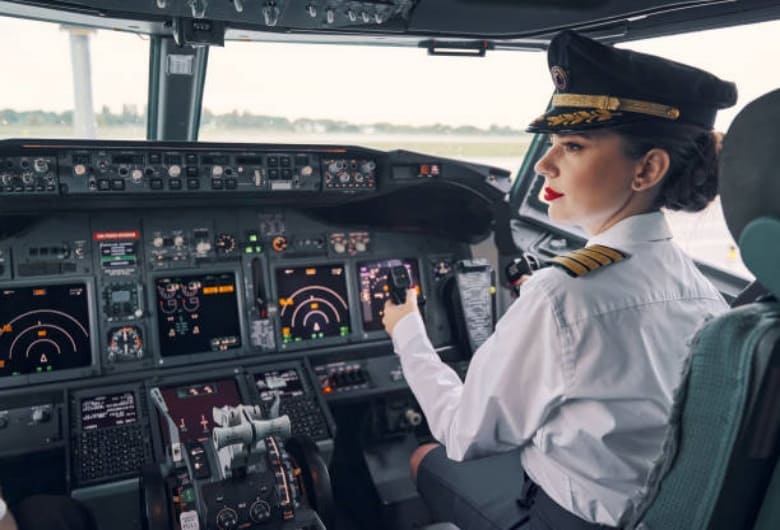 The Significance of Airline Pilot Stripes
The Significance of Airline Pilot Stripes
A pilot wears anywhere from one to four stripes on their uniform, although the way ranking works in the U.S. means that you’ll never see a pilot wearing less than three stripes on any given flight. You’ll also see flight attendants wearing stripes, but the meaning of their stripes is different from pilot stripes’ meanings. Here’s a breakdown of what pilot uniform stripes signify.
One stripe
A single stripe on the pilot’s uniform shows that the pilot is in training or has the rank of second officer. They’ve earned their wings qualification badge, but they have the lowest rank in the crew. On some flights, a single-stripe pilot can also be a third officer.
Two stripes
The pilot uniform stripes meaning two stripes are that of a second officer flight engineer, or crew member. Someone who has two stripes has also earned their wing badge but has to put in more flight hours before stepping up to the next rank of airline pilot stripes. This individual is typically third in command behind the first officer.
Three stripes
The pilot stripes meaning behind three stripes are for pilots who have reached the rank of senior first officer or FO. They also earn a higher ranking badge that’s known as wings with a star. The FO is the second in command of the flight and ranks behind the captain.
Four stripes
Four pilot stripes on the uniform denote that the person you’re looking at is the captain of the flight, also known as the pilot in command. This individual has earned the highest ranking badge, which consists of wings with a star that’s surrounded by a laurel wreath.
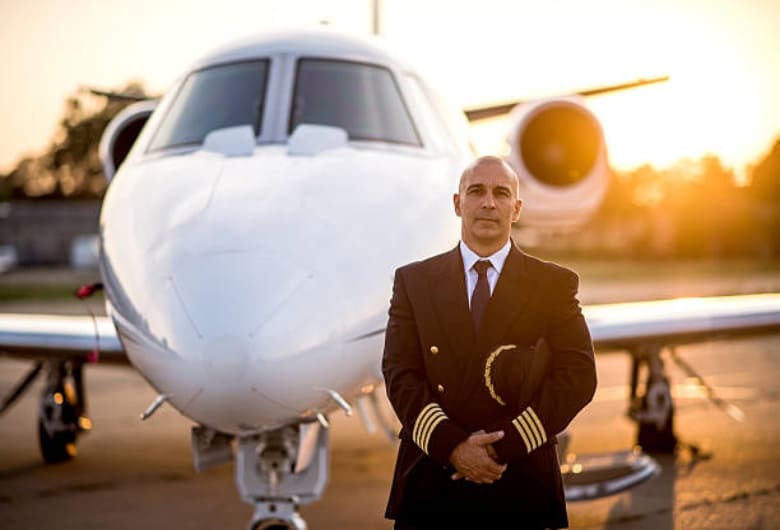 Pilot Stripe Ranks Differ Around the World
Pilot Stripe Ranks Differ Around the World
There is no one standard for pilot stripes and rankings, which means that each country and airline is free to create its own pilot stripes. In the U.S., all pilots are either first officers or captains, which means they have a significant amount of hours invested in learning how to safely fly planes of all types. What you can be sure of is that the pilot has earned their rank and keeps it for the rest of their life.
The pilot uniform stripes meanings are similar when flying with airlines that are based in other countries. You’re more likely to see pilots with one or two stripes working in the cockpit, but this doesn’t mean the pilots are less qualified so much as it means that the airline or its country of origin has a different ranking system. You can be sure that the people who are licensed to fly commercial airlines are ones who are highly qualified, competent, and capable, regardless of the number of stripes they sport.
